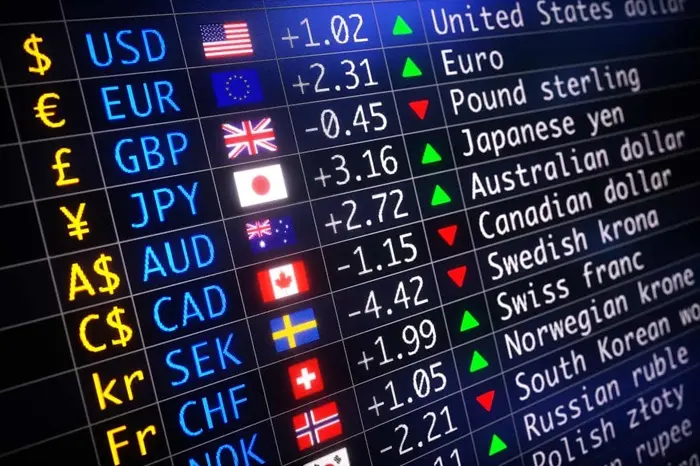The Singapore Dollar (SGD) and the Australian Dollar (AUD) are two prominent currencies in the global foreign exchange market. Both have their unique characteristics, but there has been a noticeable trend in recent years: the Singapore Dollar is often stronger than the Australian Dollar. This article delves into the various factors that contribute to the relative strength of SGD over AUD, considering both macroeconomic and market-driven elements.
Overview of SGD and AUD
Before analyzing why the Singapore Dollar is stronger than the Australian Dollar, it’s crucial to understand the fundamental characteristics of each currency and the economic conditions behind them.
The Singapore Dollar (SGD)
The Singapore Dollar is the official currency of Singapore, a highly developed financial hub in Southeast Asia. The Singaporean economy is marked by its stability, high growth, and heavy reliance on trade, finance, and technology. The SGD is considered a stable, reliable currency, supported by Singapore’s strong fiscal and monetary policies.
The Australian Dollar (AUD)
The Australian Dollar is the currency of Australia, a large and resource-rich country in the Southern Hemisphere. The Australian economy is driven by its mining and export sectors, particularly commodities like coal, iron ore, and natural gas. The AUD, however, tends to be more volatile compared to the SGD due to factors such as global commodity price fluctuations, trade relations, and shifts in investor sentiment.
Factors Contributing to the Strength of SGD
Several macroeconomic and financial factors help explain why the Singapore Dollar is stronger than the Australian Dollar.
1. Singapore’s Robust Economy
Singapore’s economy is known for its stability, growth, and high standard of living. It has a strong industrial base in electronics, chemicals, and financial services. The country maintains a low unemployment rate, a high GDP per capita, and low inflation rates. These factors create a favorable environment for the Singapore Dollar to strengthen against other currencies, including the Australian Dollar.
The Role of Trade
Singapore’s economy is highly export-oriented, with major trading partners like China, the United States, and Malaysia. The country is a major global financial center and a key player in global supply chains. The strength of its financial sector, particularly in banking, investment, and international trade, allows the country to maintain a favorable balance of payments, which in turn supports the strength of the SGD.
Fiscal and Monetary Policies
Singapore’s government and central bank, the Monetary Authority of Singapore (MAS), have consistently implemented sound fiscal and monetary policies. The MAS actively manages the exchange rate, using a managed float system where the SGD is allowed to fluctuate within an undisclosed band. By ensuring that inflation remains low and stable, the government provides a conducive environment for long-term currency strength.
2. Australia’s Economic Vulnerabilities
While Australia’s economy is advanced, it faces vulnerabilities that affect the strength of the Australian Dollar. The country’s economy is highly dependent on commodity exports, particularly to China. This reliance on the global commodity market introduces volatility to the AUD, especially when global commodity prices fluctuate.
Commodity Dependence
The Australian Dollar is often classified as a “commodity currency” because of the country’s reliance on exporting resources like iron ore, coal, gold, and natural gas. When global demand for these commodities increases, the AUD tends to appreciate. However, when commodity prices fall, the AUD weakens. In recent years, commodities have experienced price fluctuations due to global trade tensions, geopolitical risks, and the economic slowdown in China.
China-Australia Relations
Australia’s relationship with China has significant implications for the Australian economy. As China’s economy slows down or faces challenges, Australian exports to China are directly affected, leading to a decline in the value of the Australian Dollar. The economic health of China is thus a major determinant of AUD’s strength, making it less stable compared to the SGD.
3. The Role of Inflation
Inflation plays a critical role in the value of a currency. Countries with low inflation generally experience currency appreciation, while high inflation tends to erode the value of a currency.
Low Inflation in Singapore
Singapore has consistently maintained low inflation rates, often below 2%. This is a result of effective monetary policies and a focus on price stability by the Monetary Authority of Singapore. Stable prices create confidence in the Singapore Dollar, contributing to its relative strength.
Higher Inflation in Australia
In contrast, Australia has experienced periods of higher inflation, especially during periods of economic growth and when commodity prices spike. High inflation erodes the purchasing power of the AUD, leading to depreciation. This is in stark contrast to Singapore’s low and stable inflation, making the SGD stronger in comparison.
4. Government Debt Levels
Another important factor that influences currency strength is government debt. Countries with higher levels of debt may see their currencies depreciate as investors demand higher yields for the risk associated with that debt.
Singapore’s Low Debt Levels
Singapore is one of the few countries in the world with almost no national debt. The country runs budget surpluses and has a strong sovereign wealth fund, the Government of Singapore Investment Corporation (GIC), which further bolsters the country’s financial stability. This low debt-to-GDP ratio supports confidence in the Singapore Dollar, making it stronger relative to other currencies.
Australia’s Higher Debt Levels
Australia, on the other hand, carries higher levels of government debt, which can put downward pressure on the Australian Dollar. While Australia’s debt is not considered unsustainable, it is still a concern for investors, particularly if there are signs of fiscal mismanagement or economic instability. The higher debt burden also means that the Australian government must offer higher yields to attract investors, further limiting the AUD’s appreciation.
5. Investment Flows and Capital Flight
Capital flows, including foreign direct investment (FDI), portfolio investments, and speculative trading, can have a significant impact on currency strength. A currency is more likely to appreciate if the country is attracting foreign investment.
Foreign Investment in Singapore
Singapore is a top destination for foreign investment, especially in sectors like finance, technology, and logistics. The country’s pro-business policies, favorable tax regime, and well-developed infrastructure make it an attractive place for both international companies and investors. The influx of capital into Singapore strengthens the SGD as foreign investors buy the local currency to conduct business in the country.
Investment Flows in Australia
While Australia also attracts substantial foreign investment, especially in real estate and the mining sector, it is often more susceptible to shifts in global investor sentiment. If global economic conditions worsen or commodity prices fall, investors may withdraw from the Australian market, putting downward pressure on the AUD. This volatility results in less confidence in the Australian Dollar when compared to the more stable SGD.
6. Global Risk Sentiment and Safe-Haven Status
Global risk sentiment can also influence currency strength, particularly during periods of economic uncertainty. Currencies perceived as safe havens tend to strengthen when there is increased global instability.
The SGD as a Safe-Haven Currency
Singapore is considered a safe haven for investors due to its stable political environment, strong financial system, and sound fiscal policies. In times of global uncertainty or economic turbulence, investors often flock to the Singapore Dollar, driving its value up.
The AUD and Risk Sensitivity
In contrast, the Australian Dollar is considered more risk-sensitive. When investor confidence is high, the AUD tends to perform well due to strong demand for Australia’s commodities. However, when markets are nervous, the AUD often underperforms as investors seek safer assets, such as the SGD or the US Dollar.
Conclusion
In summary, the strength of the Singapore Dollar relative to the Australian Dollar can be attributed to a combination of factors, including Singapore’s robust economy, low inflation, minimal government debt, and strong foreign investment. On the other hand, the Australian Dollar is more vulnerable to fluctuations in global commodity prices, higher inflation rates, and its dependence on trade with China. The SGD’s status as a safe-haven currency also adds to its strength compared to the AUD, which is more sensitive to global economic cycles and investor sentiment.
Understanding these factors is crucial for foreign exchange traders, investors, and policymakers who are looking to make informed decisions about these two currencies. The relative strength of SGD versus AUD is not only an economic phenomenon but also a reflection of broader global trends and market dynamics.
Related topics:

























